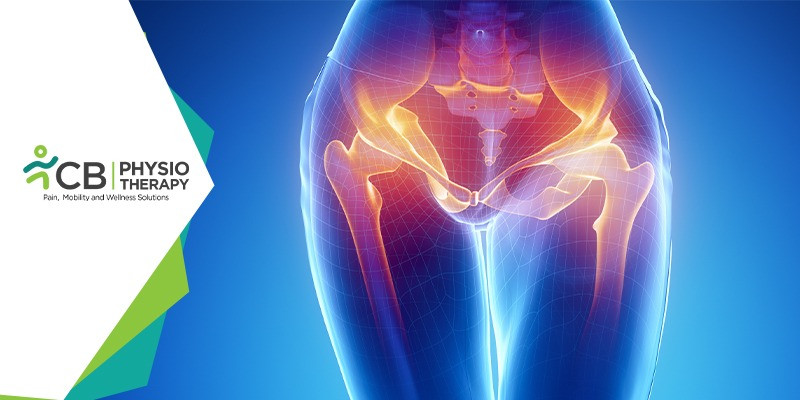Hips hurt for a variety of reasons, arthritis can be one of them. Hip Arthritis causes pain and mobility problems making it difficult for the individual to do everyday activities, but if treated early, quality of life can be preserved. Though there is no cure for arthritis, but there are many treatment options to reduce its symptoms. One of the treatment options is physiotherapy. The physiotherapist uses a range of interventions to treat this condition and also guides in recommending the activities which are to be avoided thus enabling early treatment and preventing severe damage to the joint. In this blog, we will provide you with a quick guide that will help you know hip arthritis better and will also provide the exercises which you can do to improve your functionality.
Arthritis
The hip is a ball-and-socket joint that is covered by articular cartilage. Cartilage is a spongy tissue that cushions the joints, deterioration of this tissue causes bones to rub against each other. Pain usually occurs in the groin, but you can also feel pain in the hip region.
Types of arthritis that affect the hip joint the most:
• Osteoarthritis,
• Inflammatory arthritis and
• Psoriatic arthritis.
Osteoarthritis
Osteoarthritis is the most common type of arthritis, caused by wear and tear in the hip joint. This causes cartilage damage at the end of the bones over time. It occurs in people age 50 or older due to trauma, hip dysplasia, femoroacetabular impingement, or obesity.
Inflammatory arthritis
Inflammatory arthritis, in this type there is inflammation of the joints and the surrounding tissues. It can occur in people of all ages but occurs mainly in early childhood. Types of inflammatory hip arthritis include ankylosing spondylitis, rheumatoid arthritis, systemic lupus erythematosus (SLE).
Psoriatic arthritis
This form of arthritis affects the skin. The main symptoms are joint pain, swelling, and stiffness in the affected joint, which can be the hip joint.
Benefits of Exercises
Exercises are done in a way that can make the patient feel better and also
• Relieve pain
• Decrease stiffness
• Improve flexibility
• Increase strength
Exercises
The physiotherapist initially recommends rest and ice therapy to relieve swelling and pain, activity modifications are done and walking aids like crutches and canes are provided for mobility.
Isometric hip flexion
• Lie on the bed with legs extended straight.
• Tighten or squeeze each of the buttocks and then release the tension.
• Do 5-10 reps.
Hip circles
• Stand by holding a chair for balance.
• Make first small, gentle and then large circles as large as is comfortable.
• Do for 20-30 seconds on each side and reverse the direction.
• Each day do 2-3 times as long as it feels good.
Hip swings
• Sit on the chair with legs hanging.
• Start with small swings then slowly increase the distance.
• Do 20-30 seconds on each side.
• Repeat 2-3 times.
Lateral kicks
• Stand in front of the wall.
• Raise one leg by the side as far as it is comfortable.
• Do 10-30 reps on each side.
• Repeat 2-3 times each day.
Squat
• Stand in front of the wall with back towards the wall.
• Go down by bending the knees and sliding the back on the wall.
• Go down till it is comfortable then raise back to the starting position.
• Do 8-12 squats for 2-3 sets.
Hip bridge
• Lie on the bed
• Lift the hips as high as possible.
• Push down through the heels.
• Do 8-15 repetitions, hold for 10 secs.
Calf raises
• Stand and hold onto a chair for support.
• Raise the heels as high as possible till it's comfortable.
• Do 20 reps.
Single leg deadlift
• Stand with feet apart, knees slightly bent, raise one leg off the floor.
• Flex the knee on the standing/support
• Keep the back straight and lower the torso till it's parallel to the floor.
• Squeeze glutes thrust the hips forward, and raise the torso back to the starting position.
• Do 10-15 reps.
Wall sit and press
• Stand in front of the wall
• Keep the back in contact with the wall, bend the knees, and slide down the wall to move the arms.
• Keep the core stable without arching the back move the arms overhead.
• DO 10-20 reps and 2-3 sets.
Balance pass
• Stand on one leg and the other leg in kickstand position.
• Pass the weight or dumbbell back and forth for30 seconds.
• Do 2-3 times on each side.
Pain might be triggered by more no of repetitions and thus the patient may experience more pain therefore patient must add variety and take breaks in between the exercises sessions.

